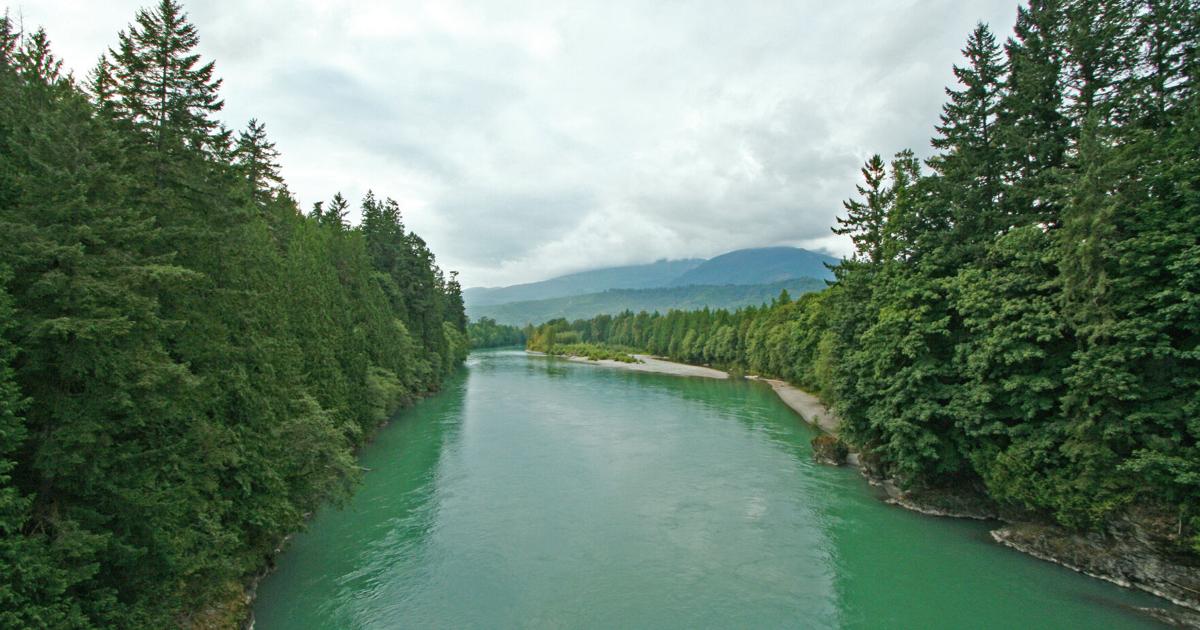Skagit River

The Skagit River, flowing majestically through the rugged landscapes of southwestern British Columbia in Canada and northwestern Washington in the United States, holds a profound cultural significance that transcends time and boundaries. Spanning approximately 150 miles (240 kilometers) in length and nourished by its major tributaries—the Cascade River, Sauk River, and Baker River—the Skagit River has been an integral part of the cultural fabric of the Pacific Northwest for millennia. In this comprehensive exploration, we delve deep into the cultural importance of the Skagit River, uncovering the rich tapestry of traditions, beliefs, and connections that have shaped its legacy.
Indigenous Heritage Along the Skagit River:
For indigenous peoples such as the Coast Salish, Nlaka’pamux, and Upper Skagit, the Skagit River is more than just a waterway; it is a sacred lifeline that sustains their communities, cultures, and spiritual beliefs. For thousands of years, these indigenous tribes have lived in harmony with the land, relying on the river’s abundant resources for sustenance, transportation, and cultural practices.
The Skagit River basin is home to ancient village sites, fishing camps, and ceremonial grounds that bear witness to the enduring presence of indigenous peoples in the region. Traditional fishing techniques, such as dip netting and reef netting, continue to be practiced along the riverbanks, preserving ancestral knowledge and strengthening tribal bonds.
Moreover, the Skagit River holds a central place in indigenous oral traditions, creation stories, and mythology, serving as a source of inspiration and reverence for generations. Its waters are believed to be inhabited by powerful spirits and guardian beings that watch over the land and its inhabitants, imparting wisdom and guidance to those who seek it.
European Exploration and Settlement:
With the arrival of European explorers and settlers in the 19th century, the cultural landscape of the Skagit River basin underwent profound changes, as indigenous traditions intersected with new ways of life and belief systems. Explorers such as Captain George Vancouver and traders from the Hudson’s Bay Company navigated the waters of the Skagit River, charting its course and establishing early trading posts along its shores.
The influx of settlers brought with it a wave of cultural exchange and adaptation, as European and indigenous peoples forged new alliances, traded goods and knowledge, and navigated the complexities of coexistence in a changing world. Missionaries, educators, and government officials sought to assimilate indigenous peoples into Euro-American society, often at the expense of their cultural heritage and sovereignty.
Despite these challenges, indigenous communities along the Skagit persevered, holding fast to their cultural identity, language, and traditions in the face of adversity. Today, efforts to revitalize indigenous languages, preserve sacred sites, and reclaim ancestral lands are underway, as tribes assert their rights to self-determination and cultural autonomy.
Cultural Practices and Traditions:
The cultural importance of the Skagit River is evident in the myriad of practices, traditions, and celebrations that take place along its shores throughout the year. From salmon fishing ceremonies and powwows to canoe journeys and storytelling gatherings, the river serves as a gathering place for indigenous and non-indigenous peoples alike to connect with each other and the land.
Salmon, in particular, holds a special significance in the cultural heritage of the Skagit River basin, serving as a symbol of abundance, resilience, and interconnectedness. The annual return of salmon to the river’s spawning grounds is celebrated with feasts, ceremonies, and rituals that honor the sacred relationship between humans and the natural world.
Furthermore, the Skagit basin is home to a rich diversity of artistic expressions, including traditional carving, weaving, drumming, and dancing, that reflect the unique cultural identities of indigenous tribes and communities. These artistic traditions serve not only as a means of cultural preservation but also as a source of pride, empowerment, and resilience for future generations.
Environmental Stewardship and Cultural Preservation:
As stewards of the land and water, indigenous peoples play a vital role in safeguarding the cultural and ecological integrity of the Skagit River basin. Through traditional ecological knowledge, community-based conservation initiatives, and collaborative partnerships, tribes are working to protect and restore critical habitats, water quality, and salmon populations in the region.
Additionally, efforts to preserve and promote indigenous languages, oral traditions, and cultural practices are essential for ensuring the continuity of cultural heritage along the Skagit. Language revitalization programs, cultural education initiatives, and youth mentorship programs are empowering indigenous communities to reclaim their identity and heritage in the modern world.
Conclusion:
In conclusion, the Skagit River serves as a testament to the enduring cultural legacy of indigenous peoples and the ongoing struggles for recognition, justice, and cultural revitalization in the face of colonialism and environmental degradation. By honoring the cultural importance of the Skagit and embracing indigenous knowledge, traditions, and perspectives, we can forge a more inclusive and sustainable future for all who call the Pacific Northwest home.
Know More about the Skagit River.
What are The Religious Places of the Skagit River?
When Did The Skagit River Basin Become a Focus?
Where is The Skagit River Located?
Who Were The Key Historical Figures and Civilizations of The Skagit River?
How to Reach Skagit River?




